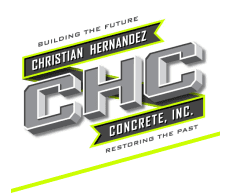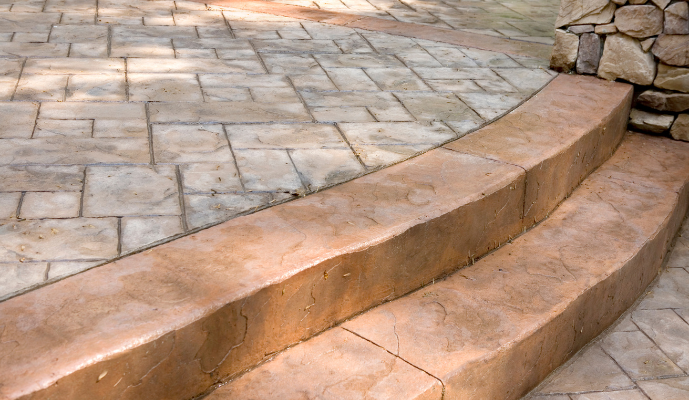Concrete steps are one of the most durable and practical features of any property because they provide stability, accessibility, and strength. Over time, however, they start to show signs of age. Chips form along the corners, cracks creep across the surface, and in some cases, entire layers begin to flake away. Many homeowners and property managers wonder whether these issues mean it is time for complete replacement, or whether the smarter and more cost-effective decision is to repair concrete steps and make them look new again.
The truth is that in most cases, concrete steps can be repaired. By using proper techniques, high-quality products, and either do-it-yourself methods or professional services, worn-out steps can be restored to a safe and visually appealing condition. Because repairs not only extend the life of your stairs but also protect against future damage, they are often the best first step before considering a full rebuild.
This comprehensive guide explores the types of damage that affect concrete steps, explains how to assess severity, reviews do-it-yourself methods, highlights when to hire a professional, and outlines how resurfacing, sealing, and preventative maintenance can keep your steps looking like new.
Why Concrete Steps Wear Down Over Time
Concrete is strong but not indestructible. It is vulnerable to the combined effects of weather, water, and daily use. Because concrete is porous, moisture seeps inside, and during cold weather, that moisture expands as it freezes. This freeze-thaw cycle eventually forces cracks to widen and creates spalling. At the same time, salts used for de-icing chemically attack the cement paste, causing surface scaling.
Repeated foot traffic adds further stress. Shoes, heavy loads, and impact against corners slowly wear away the surface. Over years of use, the result is visible cracks, rough patches, and chipped edges. These imperfections are not just cosmetic. They compromise safety, undermine curb appeal, and can even accelerate structural deterioration if ignored.

Identifying the Most Common Types of Step Damage
Concrete steps tend to experience several common forms of deterioration. Recognizing them early makes repair more manageable.
Cracks in the Surface
Cracks can be fine hairline fractures or deeper structural fissures. Hairline cracks often result from shrinkage or minor stress. Left untreated, however, they allow water to penetrate, which can turn them into wider structural cracks.
Chipped Corners and Edges
Edges of steps are particularly vulnerable because they endure impact from daily use. Chips and missing corners not only make steps look worn but also create sharp, uneven surfaces that can lead to tripping hazards.
Spalling and Scaling
Spalling refers to the flaking or peeling away of the concrete surface. This happens when water penetrates and freezes or when reinforcing steel begins to corrode. Scaling, on the other hand, is a thin peeling caused by de-icing salts or surface weakness. Both give the steps a rough, aged appearance.
Settling or Sinking
In some cases, the problem is not just on the surface. Soil erosion or shifting beneath the foundation can cause steps to settle unevenly. This creates height differences between treads, making them unsafe to walk on.
Assessing the Severity of Damage
Before deciding how to repair concrete steps, it is important to determine the extent of the problem. Small cracks less than one sixteenth of an inch wide can often be filled with crack sealers. Deeper cracks wider than one eighth of an inch usually require patching mortars and bonding agents. If a step has sunk more than half an inch or if multiple steps are out of alignment, resurfacing or even partial replacement may be necessary.
By evaluating crack width, depth of spalling, and whether steps remain level, you can make an informed decision on whether to attempt a do-it-yourself fix or call in professional help.
Do-It-Yourself Concrete Step Repairs
For homeowners with minor damage, there are cost-effective repair solutions that can be completed without hiring a contractor. DIY repairs, when performed correctly, restore both appearance and safety.
Tools and Materials Needed
Basic tools include a hammer and chisel to remove loose concrete, a wire brush to scrub debris, and a shop vacuum for cleaning dust. Application tools like trowels, floats, and edgers help shape repairs. For materials, polymer-modified patching compounds, quick-setting cement, bonding adhesives, and concrete sealers are most commonly used.
Repairing Minor Cracks and Chips
The process begins with cleaning and widening the crack slightly to ensure proper adhesion. A bonding adhesive is then brushed inside, followed by filling with patching mortar. The repair is overfilled slightly, then smoothed with a trowel. Once cured, the surface is sealed to prevent moisture intrusion.
Fixing Chipped Corners and Edges
For missing corners, wood or metal forms are secured to shape the step’s edge. After applying bonding adhesive, patching mortar is packed into the form and shaped to match the original contour. Once the repair sets, the form is removed, leaving a strong, crisp edge.
Best Practices for Curing
Concrete repairs must cure properly. Keeping the surface moist for at least 24 hours prevents shrinkage cracks. Applying sealers after curing locks in strength and guards against future damage.
When to Call a Professional
Although DIY methods work well for small imperfections, professional services are essential when damage threatens structural stability. Large cracks, extensive spalling, or sinking steps require advanced tools and expertise. Contractors can inject epoxy into deep fissures, apply overlays for full resurfacing, or even stabilize foundations if steps are sinking.
Professionals also ensure a uniform finish that blends seamlessly with the rest of your property. While the cost is higher than DIY repairs, it is often far less expensive than replacing an entire staircase.
Resurfacing to Restore Appearance
When steps are structurally sound but look aged, resurfacing offers the perfect solution. A polymer-modified overlay is applied in a thin layer across all steps, covering imperfections and creating a fresh, uniform surface.
Resurfacing has aesthetic advantages as well. Decorative techniques such as staining, coloring, or stamping allow homeowners to customize the look of their entryway. Once sealed, resurfaced steps resist abrasion, weather, and moisture, keeping them attractive for years.
Choosing the Right Products for Repairs
Selecting quality materials is critical to ensuring long-lasting results. Polymer-modified mortars are recommended because they bond well and flex slightly under temperature changes. Crack fillers with epoxy or polyurethane properties are ideal for different crack sizes. High-quality bonding adhesives improve durability, while penetrating or film-forming sealers provide long-term protection against water, salts, and stains.
Preventative Maintenance for Longevity
Repairing concrete steps is only part of the process. To make them look new for years to come, consistent maintenance is essential. Regular cleaning removes debris that traps moisture. Sealing every two to four years maintains protection against freeze-thaw cycles. Good drainage prevents standing water near steps, reducing the chance of future cracking.
In winter, avoid rock salt, which damages concrete. Instead, use alternatives like calcium magnesium acetate or sand for traction. These small habits significantly extend the life of repaired steps.
Comparing Repair Methods
Patching is cost-effective for localized damage but may leave visible repair lines. Resurfacing provides a uniform appearance and addresses widespread wear, though it requires more labor. Full replacement delivers the longest lifespan, often exceeding twenty years, but comes at the highest cost. By comparing cost per year of durability, homeowners can choose the best option for their budget and goals.

Safety Benefits of Timely Repairs
Beyond aesthetics, repairing concrete steps is about safety. Cracks and uneven surfaces create trip hazards. Filling voids, restoring uniform tread heights, and sealing slippery surfaces provide stable footing. Repairing damage promptly prevents accidents and ensures that your property is both attractive and safe for family and visitors.
CHC Concrete: Your Partner in Concrete Restoration
Concrete step repair is not just about patching cracks. It is about restoring safety, improving appearance, and extending the lifespan of one of the most important features of your property. At CHC Concrete, we specialize in comprehensive repair and restoration services. Whether your steps need minor patching, full resurfacing, or professional decorative finishes, our team provides tailored solutions. Because we use high-quality materials and proven techniques, you can count on your steps looking fresh, strong, and welcoming again. If you want long-term durability combined with excellent curb appeal, CHC Concrete is here to help bring your vision to life.

